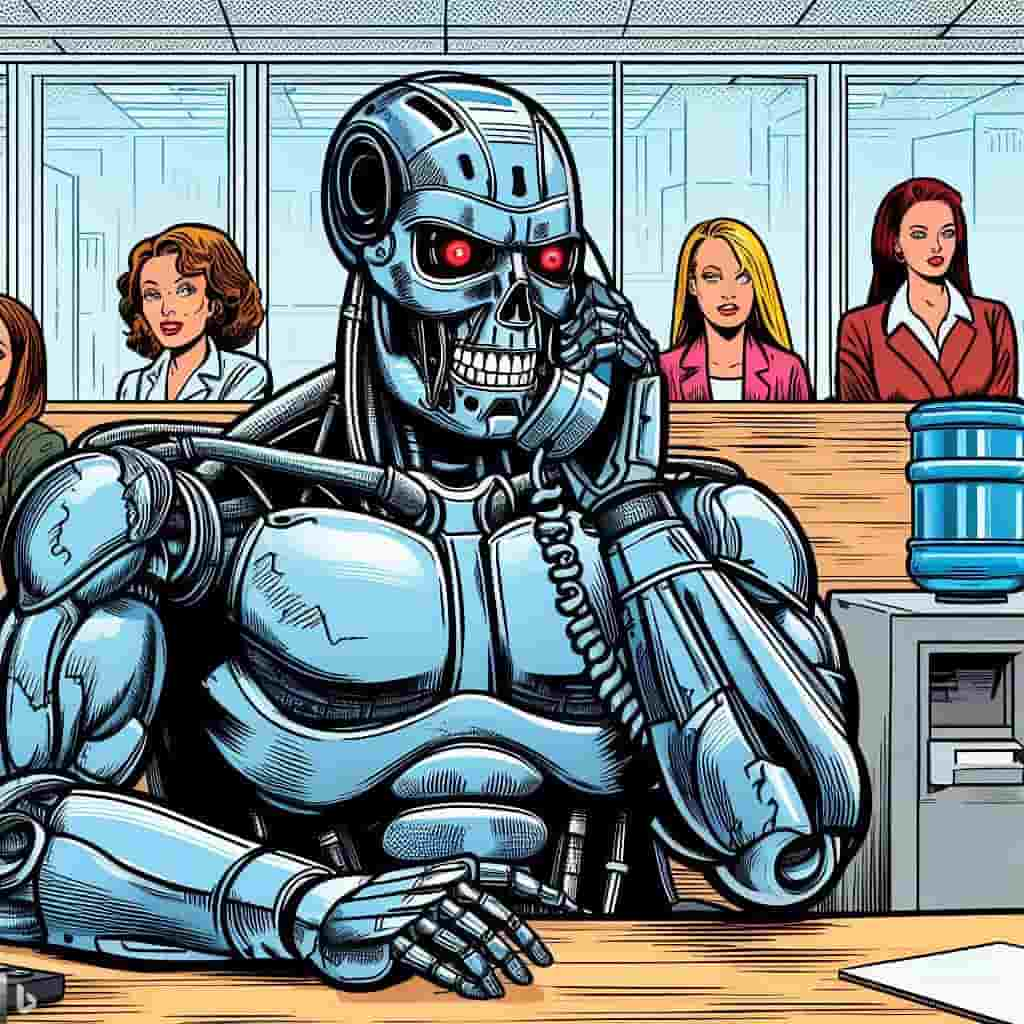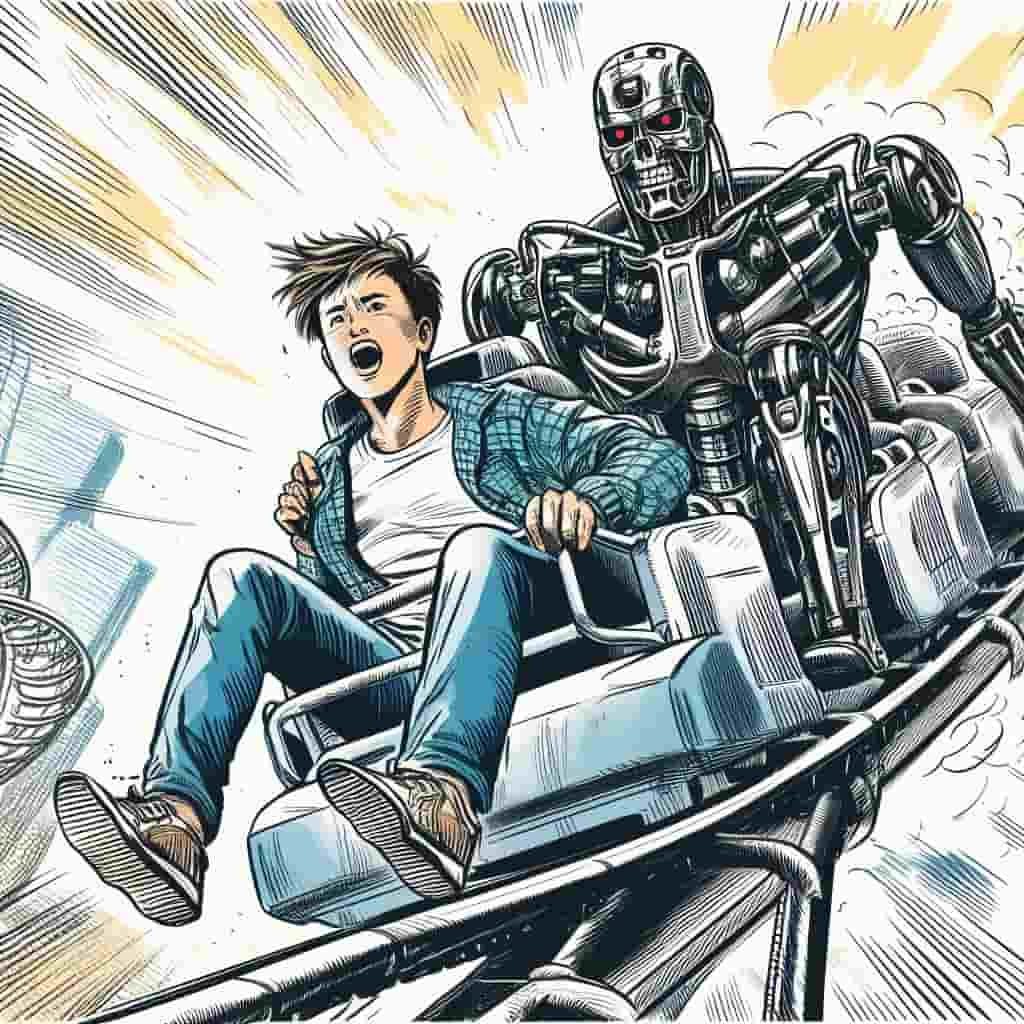Future of Work: The Rise of Soft Humanoids and AI Uncertainties
20 Oct 2023
20 Oct 2023 by Luke Puplett - Founder


Introduction
The reveal of Tesla's humanoid Optimus robot represents a major milestone in robotics. Building a dexterous, bipedal robot requires solving many of the same core problems as developing fully autonomous vehicles. With self-driving technology rapidly maturing, Tesla is poised to apply its advancements to the humanoid form factor.
Other AI pioneers like OpenAI will likely follow suit. Mastering the algorithms for mobility, object manipulation, and dynamic planning in robotics leverages much of the same deep learning that has powered recent leaps in AI software capabilities. As these core capabilities improve, we can expect more investment into advanced robotics beyond autonomous vehicles.
Picture an office filled with humanoid robots sitting at desks, answering phones, tapping on keyboards - performing all the familiar clerical and knowledge work office jobs. As fun as this vision seems, it's absurd. Robotic limbs awkwardly clacking away on keyboards and fumbling with phones designed for human hands?
Ain't gonna happen.
The Rise of the Soft Humanoid
Most office and knowledge workers spend their days interacting through software - screens, mice, keyboards. Their essential tasks involve information processing, not manual labor. This means for automating such roles, we likely don't need a full humanoid robot body. What's required is the virtual presence of an AI - its vision, voice and ability to parse information and make decisions.
Enter the "soft humanoid" - a software AI agent with human-level intellectual capabilities tailored for service, administrative and knowledge work. It has no physical form, but can interface seamlessly with both legacy and modern human-computer interaction paradigms.
Take for example a typical recruiter workflow. Recruiters leverage LinkedIn for candidate search and outreach, a CRM system to track prospects, email for communication, and voice for interviews and calls. A soft humanoid could automate much of this workflow by interfacing directly with each software system - searching profiles, updating records, drafting messages, conducting conversational voice interviews.
Legacy compatibility allows soft humanoids to automate mundane workflows by directly manipulating pixels, entering data, sending messages, and more within traditional software interfaces. Modern compatibility allows them to converse via voice AI, integrate with business APIs, collaborate in shared virtual spaces, and more.
Without the constraints of hardware, this new wave of AI automation can scale rapidly across the service sector, infiltrating white collar roles previously resistant to robotic replacement. The software-based soft humanoid marks a new milestone in AI's expanding capabilities.
Navigating Uncertainty
The rapid pace of AI advancement creates huge uncertainties for tech entrepreneurs and inventors. With the landscape shifting weekly, how does one stay ahead of the curve?
Many promising software ideas today could be obsolete before launch as AI capabilities like the soft humanoid mature. Perhaps a wiser approach is making existing software and interfaces AI-compatible, rather than building new systems from scratch. This improves odds of viability as AI infuses our digital environments.
For entrepreneurs, the safest path forward may be improving legacy systems rather than inventing entirely new paradigms vulnerable to disruption. Where true innovation thrives could be boundary-pushing hardware unlocking new physical capabilities in the real world.
In this climate of uncertainty, the risks may outweigh the rewards of attempting to predict AI's trajectory.
Interestingly, we may see a bifurcation where software innovation needs relatively less investment while hardware innovation comes to the fore. As AI permeates digital systems, the low-hanging fruit in software automation will be picked. Meanwhile, complex challenges still remain in manipulating the physical world.
Pushing the boundaries in areas like robotics, biomaterials, nanotechnology and sustainable energy could drive the next wave of high-risk, high-reward entrepreneurship. Software automation will enable this hardware innovation by handling complex optimization, simulations, and precision control.
So while software entrepreneurs ride the current wave, the boldest ventures may focus on the hard problems of atoms, not bits. The tangible world still awaits its revolution, and the barriers to entry are high. But those able to tame physics may reap the greatest rewards in the coming era of AI augmentation.

Conclusion
The accelerating pace of AI progress presents steep challenges for technology visionaries and entrepreneurs. To achieve mass adoption, an innovation requires a plateau of stability - a future landscape with defined contours and norms on which this vision can gain traction. Yet the present moment feels akin to a seascape in a storm, with waves and currents shifting chaotically week to week as AI capabilities rapidly evolve.
Navigating this turbulence requires pragmatic flexibility rather than fixed trajectories. But the lack of solid ground makes it uniquely difficult to chart any course at all. For now, the prudent path may be improving existing platforms and systems rather than attempting to invent bold new paradigms. Visionaries may find the greatest opportunities not in software, but in boundary-pushing hardware unlocking new physical capabilities and affordances.
Of course, the winds will eventually calm and a new equilibrium emerge. Until then, entrepreneurs must reconcile themselves to fluidity, leverage existing momentum, and prepare to ride out rapid disruptions. With the velocity of change today, no finite vision or destination can be clearly foreseen.
That's lovely and everything but what is Zipwire?
Zipwire Collect handles document collection for KYC, KYB, AML, RTW and RTR compliance. Used by recruiters, agencies, landlords, accountants, solicitors and anyone needing to gather and verify ID documents.
Zipwire Approve manages contractor timesheets and payments for recruiters, agencies and people ops. Features WhatsApp time tracking, approval workflows and reporting to cut paperwork, not corners.
Zipwire Attest provides self-service identity verification with blockchain attestations for proof of personhood, proof of age, and selective disclosure of passport details and AML results.
For contractors & temps, Zipwire Approve handles time journalling via WhatsApp, and techies can even use the command line. It pings your boss for approval, reducing friction and speeding up payday. Imagine just speaking what you worked on into your phone or car, and a few days later, money arrives. We've done the first part and now we're working on instant pay.
All three solutions aim to streamline workflows and ensure compliance, making work life easier for all parties involved. It's free for small teams, and you pay only for what you use.